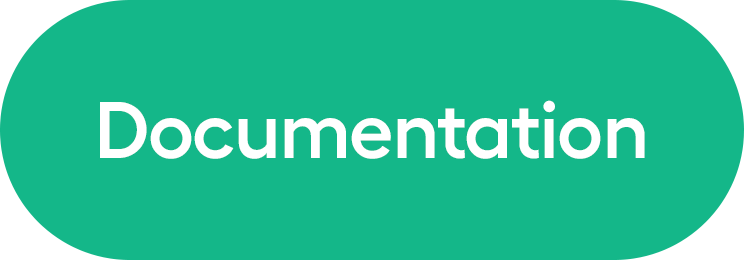Model Overview
Model Features
Model Capabilities
Use Cases
base_model:
- nvidia/Llama-3_3-Nemotron-Super-49B-v1 library_name: transformers license: other license_name: nvidia-open-model-license license_link: >- https://www.nvidia.com/en-us/agreements/enterprise-software/nvidia-open-model-license/
pipeline_tag: text-generation language:
- en tags:
- nvidia
- unsloth
- llama-3
- pytorch
Unsloth Dynamic 2.0は優れた精度を達成し、他の主要な量子化手法を凌駕します。
Llama-3.3-Nemotron-Super-49B-v1
モデル概要

Llama-3.3-Nemotron-Super-49B-v1は、Meta Llama-3.3-70B-Instruct(参照モデル)を派生させた大規模言語モデル(LLM)です。推論、人間のチャット嗜好、RAGやツール呼び出しなどのタスクに向けて追加学習された推論モデルです。このモデルは128Kトークンのコンテキスト長をサポートしています。
Llama-3.3-Nemotron-Super-49B-v1は、モデルの精度と効率性の間で優れたトレードオフを提供するモデルです。効率性(スループット)は直接コスト削減につながります。新しいニューラルアーキテクチャサーチ(NAS)アプローチにより、モデルのメモリフットプリントを大幅に削減し、大規模なワークロードや単一GPU(H200)での高負荷実行を可能にしました。このNASアプローチにより、精度と効率性のトレードオフ曲線から所望のポイントを選択できます。NASアプローチの詳細については、この論文を参照してください。
モデルは、推論能力と非推論能力の両方を強化する多段階の追加学習プロセスを経ています。これには、数学、コード、推論、ツール呼び出しのための教師ありファインチューニング段階と、チャットおよび指示追従のためのREINFORCE(RLOO)およびOnline Reward-aware Preference Optimization(RPO)アルゴリズムを使用した複数の強化学習(RL)段階が含まれます。最終的なモデルチェックポイントは、最終的なSFTとOnline RPOのチェックポイントを統合して得られます。モデルのトレーニング方法の詳細については、技術レポートとブログを参照してください。

このモデルはLlama Nemotronコレクションの一部です。このファミリーの他のモデルは以下で見つけられます:
このモデルは商用利用可能です。
ライセンス/利用規約
管理規約:このモデルの使用はNVIDIA Open Model Licenseに準拠します。
追加情報:Llama 3.3 Community License Agreement。Llamaで構築。
モデル開発者: NVIDIA
モデル作成時期: 2024年11月から2025年2月にかけてトレーニング
データ鮮度: 事前学習データはMeta Llama 3.3 70Bに準じ2023年がカットオフ
使用例:
AIエージェントシステム、チャットボット、RAGシステム、その他のAI駆動アプリケーションを設計する開発者。一般的な指示追従タスクにも適しています。
リリース日:
2025年3月18日
参考文献
- [2505.00949] Llama-Nemotron: Efficient Reasoning Models
- [2411.19146] Puzzle: Distillation-Based NAS for Inference-Optimized LLMs
- [2502.00203] Reward-aware Preference Optimization: A Unified Mathematical Framework for Model Alignment
モデルアーキテクチャ
アーキテクチャタイプ: 密なデコーダのみのTransformerモデル
ネットワークアーキテクチャ: Llama 3.3 70B Instruct、ニューラルアーキテクチャサーチ(NAS)でカスタマイズ
このモデルはMetaのLlama-3.3-70B-Instructを派生させ、ニューラルアーキテクチャサーチ(NAS)を使用しています。NASアルゴリズムは非標準的で非反復的なブロックをもたらします。これには以下が含まれます:
- スキップアテンション:一部のブロックではアテンションが完全にスキップされるか、単一の線形層に置き換えられます。
- 可変FFN:FFN層の拡張/圧縮比率はブロック間で異なります。
参照モデルのブロックごとの蒸留を利用し、各ブロックに対して品質と計算複雑性の異なるトレードオフを提供する複数のバリアントを作成しました(詳細は後述)。その後、必要なスループットとメモリ(単一のH100-80GB GPUに最適化)を満たしながら品質劣化を最小限に抑えるモデルを作成するためにブロックを探索しました。モデルはその後、英語の単一および複数ターンチャットユースケースに焦点を当てた知識蒸留(KD)を受けました。KDステップには、FineWeb、Buzz-V1.2、Dolmaの3つのデータセットの混合からなる400億トークンが含まれていました。
想定用途
Llama-3.3-Nemotron-Super-49B-v1は、英語とプログラミング言語で使用することを目的とした汎用推論およびチャットモデルです。その他の非英語言語(ドイツ語、フランス語、イタリア語、ポルトガル語、ヒンディー語、スペイン語、タイ語)もサポートされています。
入力
- 入力タイプ: テキスト
- 入力形式: 文字列
- 入力パラメータ: 一次元(1D)
- 入力関連のその他のプロパティ: 最大131,072トークンのコンテキスト長
出力
- 出力タイプ: テキスト
- 出力形式: 文字列
- 出力パラメータ: 一次元(1D)
- 出力関連のその他のプロパティ: 最大131,072トークンのコンテキスト長
モデルバージョン
1.0 (2025年3月18日)
ソフトウェア統合
- ランタイムエンジン: Transformers
- 推奨ハードウェアマイクロアーキテクチャ互換性:
- NVIDIA Hopper
- NVIDIA Ampere
クイックスタートと使用推奨事項:
- 推論モード(ON/OFF)はシステムプロンプトで制御され、以下の例のように設定する必要があります。すべての指示はユーザープロンプト内に含める必要があります
- 推論ONモードでは、温度を
0.6、Top Pを0.95に設定することを推奨します - 推論OFFモードでは貪欲デコードを使用することを推奨します
- 特定のテンプレートが必要なベンチマークごとに評価用のプロンプトリストを提供しています
- 推論ONモードで推論が必要なかった場合、モデルは
<think></think>を含みます、これは期待される動作です
このモデルはプレビューAPIで試すことができます:Llama-3_3-Nemotron-Super-49B-v1。
Transformersで使用する
Hugging Face Transformersライブラリでの使用例を以下に示します。推論モード(ON/OFF)はシステムプロンプトで制御されます。以下の例を参照してください
transformersパッケージはバージョン4.48.3を使用することを推奨します。
推論ONの例:
import torch
import transformers
model_id = "nvidia/Llama-3_3-Nemotron-Super-49B-v1"
model_kwargs = {"torch_dtype": torch.bfloat16, "trust_remote_code": True, "device_map": "auto"}
tokenizer = transformers.AutoTokenizer.from_pretrained(model_id)
tokenizer.pad_token_id = tokenizer.eos_token_id
pipeline = transformers.pipeline(
"text-generation",
model=model_id,
tokenizer=tokenizer,
max_new_tokens=32768,
temperature=0.6,
top_p=0.95,
**model_kwargs
)
thinking = "on"
print(pipeline([{"role": "system", "content": f"detailed thinking {thinking}"},{"role": "user", "content": "Solve x*(sin(x)+2)=0"}]))
推論OFFの例:
import torch
import transformers
model_id = "nvidia/Llama-3_3-Nemotron-Super-49B-v1"
model_kwargs = {"torch_dtype": torch.bfloat16, "trust_remote_code": True, "device_map": "auto"}
tokenizer = transformers.AutoTokenizer.from_pretrained(model_id)
tokenizer.pad_token_id = tokenizer.eos_token_id
pipeline = transformers.pipeline(
"text-generation",
model=model_id,
tokenizer=tokenizer,
max_new_tokens=32768,
do_sample=False,
**model_kwargs
)
# Thinkingは"on"または"off"に設定可能
thinking = "off"
print(pipeline([{"role": "system", "content": f"detailed thinking {thinking}"},{"role": "user", "content": "Solve x*(sin(x)+2)=0"}]))
vLLMで使用する
pip install vllm==0.8.3
vLLMでサーブする例:
python3 -m vllm.entrypoints.openai.api_server \
--model "nvidia/Llama-3_3-Nemotron-Super-49B-v1" \
--trust-remote-code \
--seed=1 \
--host="0.0.0.0" \
--port=5000 \
--served-model-name "nvidia/Llama-3_3-Nemotron-Super-49B-v1" \
--tensor-parallel-size=8 \
--max-model-len=32768 \
--gpu-memory-utilization 0.95 \
--enforce-eager
推論:
エンジン:
- Transformers
テストハードウェア:
- FP8: 1x NVIDIA H100-80GB GPU(近日公開予定!)
- BF16:
- 2x NVIDIA H100-80GB
- 2x NVIDIA A100-80GB GPU
[推奨/サポート] オペレーティングシステム: Linux
トレーニングデータセット
知識蒸留段階の前に、多様なトレーニングデータが使用され、その中にはFineWeb、Buzz-V1.2、Dolmaの3つが含まれていました。
コード、数学、推論能力の向上のための多段階追加学習フェーズのデータは、元のLlama指示モデルの数学、コード、一般的な推論、指示追従能力の改善をサポートするSFTとRLデータのコンパイルです。
このモデルリリースと併せて、NVIDIAは追加学習データの3000万サンプルを公開し、パブリックで許容的なものとしています。Llama-Nemotron-Postraining-Dataset-v1を参照してください。
ドメインの分布は以下の通りです:
| カテゴリー | 値 |
|---|---|
| 数学 | 19,840,970 |
| コード | 9,612,677 |
| 科学 | 708,920 |
| 指示追従 | 56,339 |
| チャット | 39,792 |
| 安全性 | 31,426 |
プロンプトは公開されたオープンコーパスまたは合成的に生成されたものから収集されました。応答はさまざまなモデルによって合成的に生成され、一部のプロンプトには推論ONとOFFの両方のモードの応答が含まれ、モデルが2つのモードを区別するようにトレーニングされました。
トレーニングデータセットのデータ収集:
- ハイブリッド:自動化、人間、合成
トレーニングデータセットのデータラベリング:
- ハイブリッド:自動化、人間、合成
評価データセット
Llama-3.3-Nemotron-Super-49B-v1の評価には以下のデータセットを使用しました。
評価データセットのデータ収集:
- ハイブリッド:人間/合成
評価データセットのデータラベリング:
- ハイブリッド:人間/合成/自動
評価結果
これらの結果には「推論ON」と「推論OFF」の両方が含まれます。「推論ON」モードでは温度=0.6、top_p=0.95を、「推論OFF」モードでは貪欲デコードを使用することを推奨します。すべての評価は32kシーケンス長で行われました。ベンチマークは最大16回実行され、より正確にするためにスコアが平均化されています。
注:該当する場合、プロンプトテンプレートが提供されます。ベンチマークを完了する際は、以下のベンチマークを再現するために、提供されたプロンプトに従って正しい出力形式を解析していることを確認してください。
Arena-Hard
| 推論モード | スコア |
|---|---|
| 推論OFF | 88.3 |
MATH500
| 推論モード | pass@1 |
|---|---|
| 推論OFF | 74.0 |
| 推論ON | 96.6 |
ユーザープロンプトテンプレート:
"以下は数学の問題です。ステップごとに推論し、最終的な答えを出してください。最終的な答えは\boxed{}で囲んでください。\n問題: {question}"
AIME25
| 推論モード | pass@1 |
|---|---|
| 推論OFF | 13.33 |
| 推論ON | 58.4 |
ユーザープロンプトテンプレート:
"以下は数学の問題です。ステップごとに推論し、最終的な答えを出してください。最終的な答えは\boxed{}で囲んでください。\n問題: {question}"
GPQA
| 推論モード | pass@1 |
|---|---|
| 推論OFF | 50 |
| 推論ON | 66.67 |
ユーザープロンプトテンプレート:
"この質問の正しい答えは何ですか: {question}\n選択肢:\nA. {option_A}\nB. {option_B}\nC. {option_C}\nD. {option_D}\nステップごとに考え、最終的な答え(単一の文字A、B、C、またはD)を\boxed{}に入れてください"
IFEval
| 推論モード | Strict:Instruction |
|---|---|
| 推論OFF | 89.21 |
BFCL V2 Live
| 推論モード | スコア |
|---|---|
| 推論OFF | 73.7 |
ユーザープロンプトテンプレート:
あなたは関数構成の専門家です。質問と可能な関数のセットが与えられます。
質問に基づいて、目的を達成するために1つ以上の関数/ツール呼び出しを行う必要があります。
どの関数も使用できない場合は指摘してください。与えられた質問に関数に必要なパラメータが不足している場合も指摘してください。ツール呼び出しセクションでは関数呼び出しのみを返す必要があります。
いずれかの関数を呼び出すことを決定した場合、<TOOLCALL>[func_name1(params_name1=params_value1, params_name2=params_value2...), func_name2(params)]</TOOLCALL>の形式で記述する必要があります。
応答に他のテキストを含めてはいけません。
以下は呼び出し可能な関数のJSON形式リストです。
<AVAILABLE_TOOLS>{functions}</AVAILABLE_TOOLS>
{user_prompt}
MBPP 0-shot
| 推論モード | pass@1 |
|---|---|
| 推論OFF | 84.9 |
| 推論ON | 91.3 |
ユーザープロンプトテンプレート:
あなたは非常に知的なコーディングアシスタントで、ユーザーの指示に対して常に正確で信頼性の高い応答を提供します。
@@ 指示
以下は与えられた問題とテスト例です:
{prompt}
この問題を解決するためにpythonプログラミング言語を使用してください。
コードにはテストサンプルからの関数を含め、これらの関数の入力と出力の形式がテストサンプルと一致するようにしてください。
完了したすべてのコードを1つのコードブロックで返してください。
このコードブロックは次の形式である必要があります:
```python
# ここにコードを記述
```
MT-Bench
| 推論モード | スコア |
|---|---|
| 推論OFF | 9.17 |
倫理的考慮事項:
NVIDIAは、信頼できるAIは共有責任であると考えており、幅広いAIアプリケーションの開発を可能にするためのポリシーとプラクティスを確立しています。 当社の利用規約に従ってダウンロードまたは使用する場合、開発者は内部モデルチームと協力して、このモデルが関連業界とユースケースの要件を満たし、予期しない製品の誤用に対処していることを確認する必要があります。
このモデルの倫理的考慮事項の詳細については、Model Card++ 説明可能性、バイアス、安全性&セキュリティ、プライバシーサブカードを参照してください。
セキュリティの脆弱性またはNVIDIA AIに関する懸念はこちらから報告してください。
引用
@misc{bercovich2025llamanemotronefficientreasoningmodels,
title={Llama-Nemotron: Efficient Reasoning Models},
author={Akhiad Bercovich and Itay Levy and Izik Golan and Mohammad Dabbah and Ran El-Yaniv and Omri Puny and Ido Galil and Zach Moshe and Tomer Ronen and Najeeb Nabwani and Ido Shahaf and Oren Tropp and Ehud Karpas and Ran Zilberstein and Jiaqi Zeng and Soumye Singhal and Alexander Bukharin and Yian Zhang and Tugrul Konuk and Gerald Shen and Ameya Sunil Mahabaleshwarkar and Bilal Kartal and Yoshi Suhara and Olivier Delalleau and Zijia Chen and Zhilin Wang and David Mosallanezhad and Adi Renduchintala and Haifeng Qian and Dima Rekesh and Fei Jia and Somshubra Majumdar and Vahid Noroozi and Wasi Uddin Ahmad and Sean Narenthiran and Aleksander Ficek and Mehrzad Samadi and Jocelyn Huang and Siddhartha Jain and Igor Gitman and Ivan Moshkov and Wei Du and Shubham Toshniwal and George Armstrong and Branislav Kisacanin and Matvei Novikov and Daria Gitman and Evelina Bakhturina and Jane Polak Scowcroft and John Kamalu and Dan Su and Kezhi Kong and Markus Kliegl and Rabeeh Karimi and Ying Lin and Sanjeev Satheesh and Jupinder Parmar and Pritam Gundecha and Brandon Norick and Joseph Jennings and Shrimai Prabhumoye and Syeda Nahida Akter and Mostofa Patwary and Abhinav Khattar and Deepak Narayanan and Roger Waleffe and Jimmy Zhang and Bor-Yiing Su and Guyue Huang and Terry Kong and Parth Chadha and Sahil Jain and Christine Harvey and Elad Segal and Jining Huang and Sergey Kashirsky and Robert McQueen and Izzy Putterman and George Lam and Arun Venkatesan and Sherry Wu and Vinh Nguyen and Manoj Kilaru and Andrew Wang and Anna Warno and Abhilash Somasamudramath and Sandip Bhaskar and Maka Dong and Nave Assaf and Shahar Mor and Omer Ullman Argov and Scot Junkin and Oleksandr Romanenko and Pedro Larroy and Monika Katariya and Marco Rovinelli and Viji Balas and Nicholas Edelman and Anahita Bhiwandiwalla and Muthu Subramaniam and Smita Ithape and Karthik Ramamoorthy and Yuting Wu and Suguna Varshini Velury and Omri Almog and Joyjit Daw and Denys Fridman and Erick Galinkin and Michael Evans and Katherine Luna and Leon Derczynski and Nikki Pope and Eileen Long and Seth Schneider and Guillermo Siman and Tomasz Grzegorzek and Pablo Ribalta and Monika Katariya and Joey Conway and Trisha Saar and Ann Guan and Krzysztof Pawelec and Shyamala Prayaga and Oleksii Kuchaiev and Boris Ginsburg and Oluwatobi Olabiyi and Kari Briski and Jonathan Cohen and Bryan Catanzaro and Jonah Alben and Yonatan Geifman and Eric Chung and Chris Alexiuk},
year={2025},
eprint={2505.00949},
archivePrefix={arXiv},
primaryClass={cs.CL},
url={https://arxiv.org/abs/2505.00949},
}
 Transformers
Transformers Transformers Supports Multiple Languages
Transformers Supports Multiple Languages Transformers Supports Multiple Languages
Transformers Supports Multiple Languages Transformers English
Transformers English

